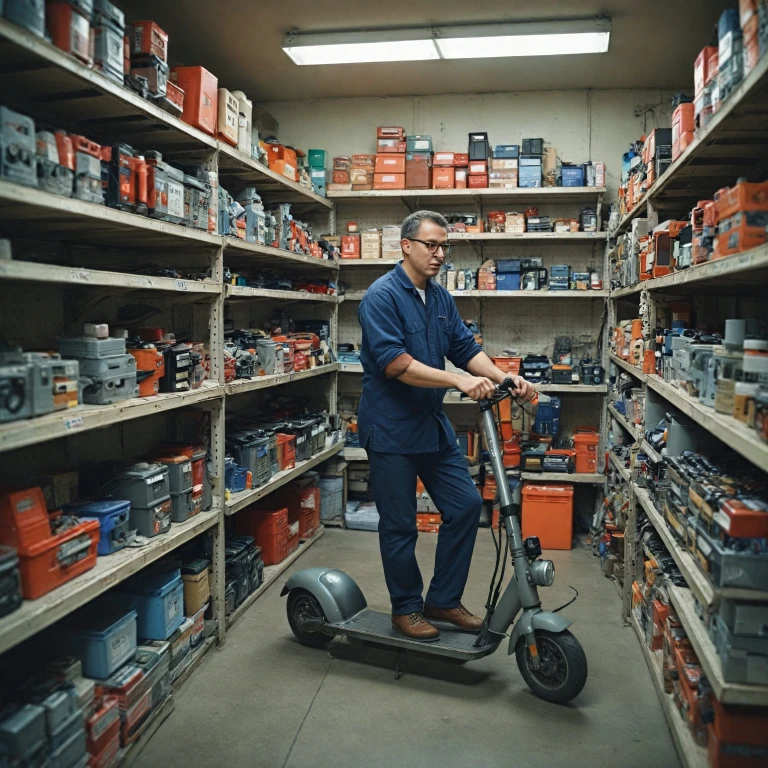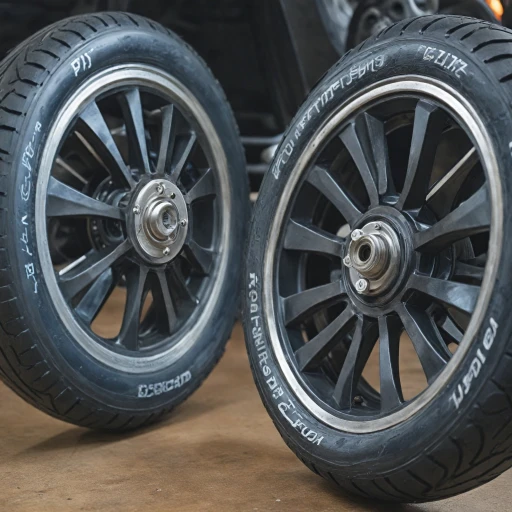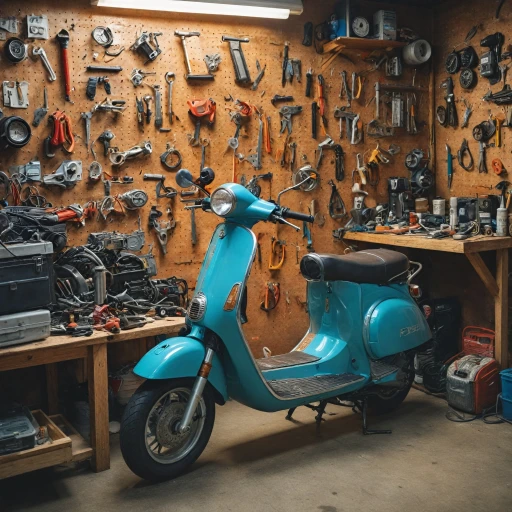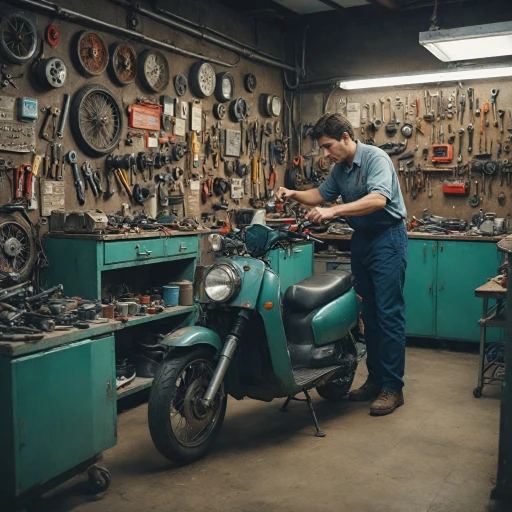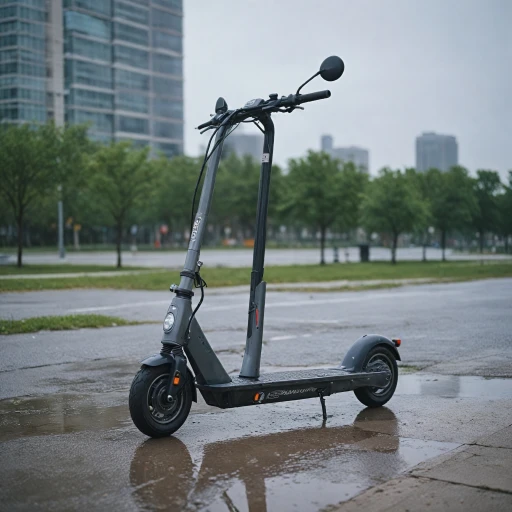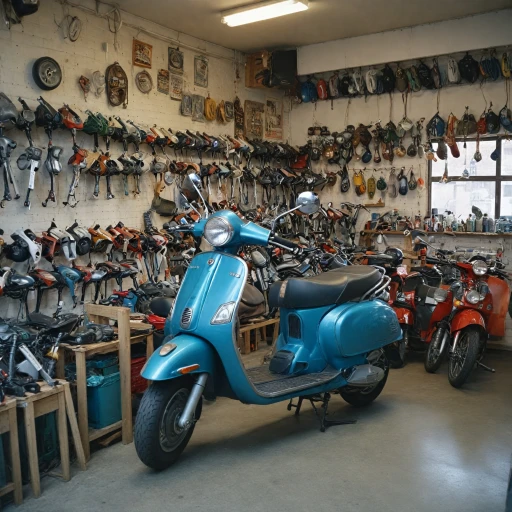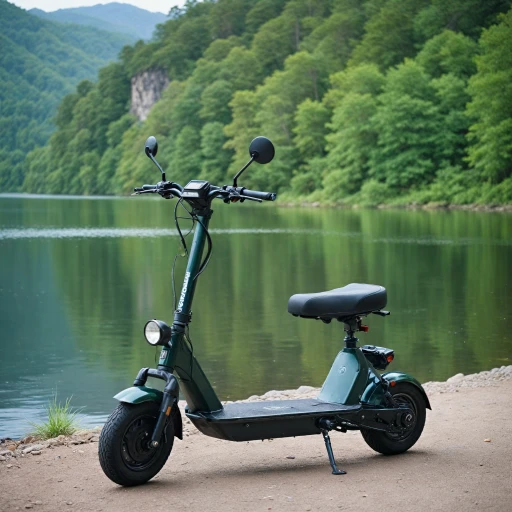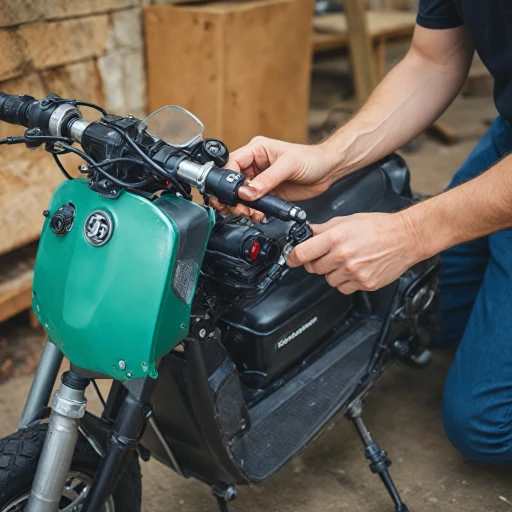
Understanding Common E-Scooter Issues
Recognizing Typical E-Scooter Hiccups
Electric scooters, much like any electric vehicle, can sometimes face a variety of issues that may hinder performance. Understanding these common problems is the first step in mastering repair skills and ensuring a smooth ride. While every model has its quirks, some problems just seem to occur more frequently across the board.
Battery Blues
The battery is arguably the heart of your electric scooter, and boy, can it have its share of issues. If you find that the scooter won't start or perhaps it's losing charge quicker than before, it could be time for some battery maintenance. Maintaining the battery properly can extend its lifespan, potentially saving you from having to buy a new one prematurely. Consider checking [ways to maximize your electric scooter's battery life] for detailed insights.
Flat Tire Frustrations
Flat tires are annoyingly common, and they can turn any smooth ride into a repair-induced headache. Popped or deflated tires often require immediate attention, as they can leave you stranded. Regular inspections and knowing how to change a flat yourself can be immensely helpful.
Brake Bother
Brakes are critical for safety. If they squeal when you stop your scooter, feel loose, or don't function as quickly as they used to, it's time for some DIY brake adjustments. Consistent checks and minor tweaks can prolong their efficiency and increase your safety on the road.
Motor Mysteries
Sometimes the scooter just refuses to move smoothly or makes strange noises – that could mean motor trouble. Basic troubleshooting practices can solve many motor issues, while others might require professional intervention. Understanding when to check on your motor helps in maintaining the scooter's overall health.
Clutching at Complexity: When to Get Help
Despite the most earnest efforts, some repairs are best left to the experts. Recognizing the signs that it's time for a visit to a repair shop can prevent further damage. To assist in finding a reliable electric scooter repair service nearby, consulting a professional takes the burden off your shoulders and ensures quality service.
Essential Tools for E-Scooter Repair
Tools You Can't Do Without
Before diving into the intricate world of electric scooter repair, it’s crucial to gather the right tools to ensure the process is as smooth as possible. Whether you're attending to a scooter battery, motor, or even a flat tire, having a well-stocked toolkit will streamline your repair service and help address various issues that can crop up in electric scooters.
- Screwdrivers and Wrenches: These come in handy for most scooter repairs, from accessing the battery compartment to adjusting brakes. A variety of screwdriver head sizes and wrench types will cater to different models electric scooters.
- Multimeter: To diagnose electrical issues, this tool helps test the electrical connectivity within your scooter's components, ensuring the scooter bike is in top notch condition.
- Tire Repair Kit: A must-have for patching up a flat tire. Many repair shops and service centers recommend a basic kit that includes tire levers and a patch kit.
- Battery Charger and Tester: Essential for maintaining and checking the health of your electric scooter's battery, which is the heart of your ride.
Understanding which tools are indispensable can really empower your repair sessions, reducing the reliance on professional help and cutting down on unnecessary trips to a repair shop. If you're unsure about tackling motor troubleshooting or other complex repairs, don't hesitate to explore reliable electric scooter repair services nearby.
Remember, while these tools are vital, each scooter model may have its own specific requirements. Checking your privacy policy or warranty information can provide insight into the tools recommended or allowed by your scooter brand, preserving the terms and ensuring they remain valid if you need to seek a repair or service from recognized centers.
Step-by-Step Guide to Battery Maintenance
Prolonging Your E-Scooter's Lifespan with Proper Battery Maintenance
For electric scooters, the battery is the heart of the machine and can often be the most susceptible to wear and tear. Regular maintenance is crucial to ensure you get the most out of your scooter and avoid unnecessary trips to the repair shop.
Electric scooter batteries generally have a lifespan determined by a fixed number of charge cycles, which makes it important to understand proper handling and charging practices. Here are some key steps to maintain your battery:
- Always use the charger provided by the manufacturer, as using a different charger can damage the battery and void its warranty.
- Avoid fully depleting your scooter's battery. It is advisable to charge your scooter when it reaches around 20% to prolong the battery's lifespan.
- Store your scooter in a cool, dry place when not in use. Excessive heat can reduce the efficiency of the battery over time.
- Check battery connections regularly to ensure they are secure and clean. Loose or dirty connections could lead to performance issues.
- For long-term battery storage, ensure it is charged to approximately 50% and topped off every couple of months if not in regular use.
Proper maintenance extends the range and life of the battery, allowing you to enjoy your electric scooter longer while ensuring the safety of your rides. Additionally, securing your electric scooter against potential theft is crucial; read our essential tips for safety to keep your investment safe.
DIY Brake Adjustments and Repairs
Brake Performance: Ensuring Safety and Reliability
Adjusting and repairing the brakes of your electric scooter is crucial for both safety and smooth rides. Whether your model is a scooter bike or a more compact design, brakes can often be the most crucial component requiring attention. Regular maintenance can prevent potential mishaps and extend the lifespan of the braking system.
When it comes to brake repairs, here's a simplified process you might follow to keep everything in top shape:
- Check the Brake Pads: Start by inspecting the brake pads for wear and tear. Worn-out pads can increase stopping distance and pose a safety risk. If they appear thin or uneven, it's time to replace them.
- Inspect the Brake Cables: Make sure the cables are not frayed and are properly lubricated. Tension issues often stem from badly maintained cables.
- Adjust the Brake Lever: If the brake lever feels too loose or tight, adjust it by altering the cable tension. Proper cable tension is critical for responsive braking.
- Test the Brakes: Once adjustments are made, always test the brakes to ensure they function correctly. A repair service or help center might be worth visiting if you notice persistent issues.
Troubleshooting Common Brake Problems
At times, you might find that even with adequate DIY maintenance, something feels off with your scooter's brakes. It's important to identify and solve these issues effectively. Common problems include squeaking brakes, which often result from dust or dirt accumulation. Cleaning the brake components can resolve this.
For electric scooters experiencing reduced braking power, verify the tightness of the entire braking system—for instance, the brake bolts might need tightening. Consider consulting a local repair shop or service center if solutions aren’t evident to you.
In case your scooter still faces issues despite following these tips, maybe it's time for the intervention of a professional repair service. Understanding when to handle repairs yourself and when to hand it over to an expert remains a key aspect of e-scooter care.
Motor Troubleshooting Techniques
Diagnosing Motor Problems and Practical Solutions
When it comes to electric scooter repairs, motor issues can be a bit daunting, yet understanding some basic troubleshooting techniques can save you both time and money. Here's how you can tackle common motor problems with confidence.- Check the Connections: Start with ensuring that all wires and connections to the motor are secure. Loose or corroded connections can cause problems that mimic significant motor failures.
- Listen for Unusual Noises: If your scooter emits unfamiliar noises when in use, it might indicate a motor problem. Grinding sounds could suggest internal mechanical issues that need addressing.
- Inspect for Overheating: Motors can overheat if they're overworked or if the cooling system is inadequate. Ensure that the vents are not blocked and that the motor cools down properly after each ride.
- Test the Motor Using a Multimeter: A multimeter can be a handy tool in testing the motor’s electrical continuity. Lack of continuity may indicate a burned motor coil or circuitry issues.
- Consider Possible Battery Issues: Sometimes the issue may not be with the motor but with the scooter battery. Verify the battery output and connections, as issues here can affect the motor's performance.
When to Seek Professional Help
Recognizing When It's Time to Call in the Experts
Repairing an electric scooter can feel satisfying and rewarding. However, there are certain instances where seeking professional help is not only advisable but necessary. Here’s a breakdown of situations where professional intervention is your best bet, along with some guiding insights from earlier sections in this guide.
Firstly, if you've meticulously followed the troubleshooting techniques for the battery yet find that it still won’t hold a charge, it may be time to consult a repair service center. Similarly, motor problems can range from simple fixes to more complex issues. If your motor troubleshooting has not resolved the problem, a visit to a specialized shop might be needed.
Sometimes, adjusting and repairing brakes yourself can work wonders, but there is a fine line. Should you notice persistent brake issues despite adjustments, or a replacement part is needed, professional expertise will ensure safety and optimal function.
- Battery and Motor Concerns: If your scooter’s battery fails repeatedly or the motor experiences power loss, it's wise to have a professional diagnosis.
- Persistent Flat Tire: While you might handle a flat tire repair, repeated occurrences could suggest a deeper issue, warranting expert assessment.
- Manufacturer’s Warranty: If your scooter is still under the manufacturer's year warranty or has coverage from a service warranty, free or affordable repairs could be available, which only a certified center can carry out without voiding the warranty.
- Complex Electrical Faults: Electrical issues beyond simple connections or replacements should be assessed by experts to prevent safety hazards.
Finally, a good rule of thumb is if any damages appear to be risky or beyond your troubleshooting scope, reaching out to a trusted repair shop will save you both time and potential further damage. A service center with wide range knowledge of various scooter models will provide the necessary help to get your scooter back in top condition.
Professional shops have the advantage of access to a wide range of spare parts and technical expertise for different electric scooters, ensuring a more comprehensive repair service. Remember, knowing when to seek professional help is also part of mastering the art of electric scooter repair.
